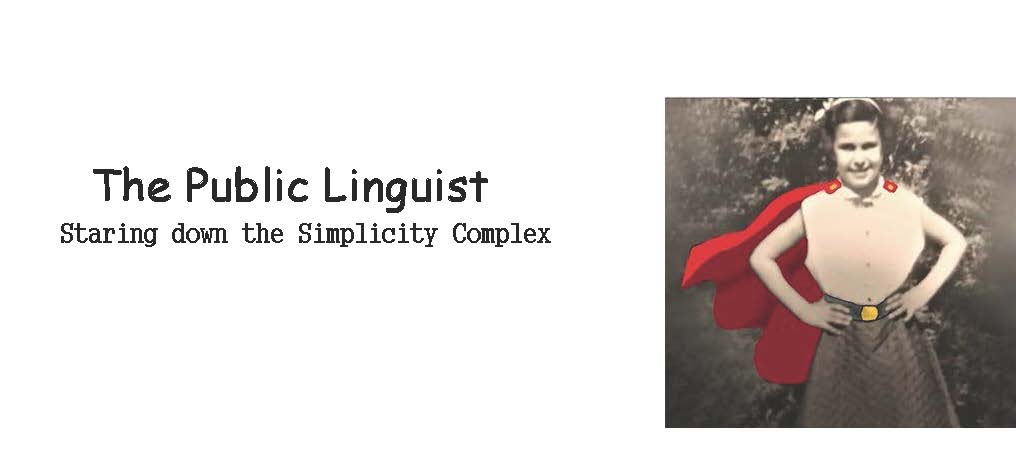It’s probably like, if you’ve been married with kids, and dogs and houses for 30 years and you find out your spouse has a second, parallel family somewhere.
Or your crowd pleasing lemon cake stops reliably rising the way it always has.
Maybe more like a winning backhand shot that now keeps getting tangled up in the net.
For me that’s what being a “recognized health communications expert” of 30+ years feels like in this time of Covid.
This past summer a department of health contacted me wanting to know if I had any recommendations for “simplifying” the mask message. Make it clear to people why masks were important. One online communications group urged professionals to drop the word, “transmission” – too complicated a word that would trip up the public. Another physician wondered if we needed to explain lung anatomy to the public so they’d understand the risk of going without a mask. “Anatomy?” I replied. I couldn’t help myself. “Remember the old med school saying - “When you hear hoof beats think horses, not zebras!”
Our conversation with the department of health ended there.
If we scratch the surface of this non-mask wearing, conspiracy promoting segment of the population we find some very interesting facts ( like with evidence) that should have been factored in at the very start when public health communicators were sending out health information about Covid 19.
Here’s my short list of horses:
1. Science Literacy Decades of research shows that less than 1/3 of the population is science literate. Less than 25% understand what it means to study something using the scientific method. So most people don’t understand that science is dynamic – science knowledge changes, sometimes quickly and therefore recommendations change. The changing calculus of this pandemic is being scratched out in chalk marks, easily erased and rewritten.
Should we wear face masks? Who do masks protect? How does social distancing really work? How many feet apart? Does having antibodies mean we are immune to COVID? The changing answers to these questions don't mean expert recommendations are as iffy as playing pin the tail on the donkey or playing a game of darts blind-folded (does anyone really do that!).2. Trust in science It waivers greatly in the US. For the reasons above but also because most often there is a disconnect between how scientists say what they know, and how most of us take in the information. For example, early in the pandemic during the White House Briefings Dr. Birx says: [We want to have a test] that is efficient. To let people know who has been positive or immunity. That is critical to epidemiologists and public officials, to know what the penetrance of a virus was in a community when all you’re seeing is the serious cases and testing the most symptomatic. (Briefing, 4/10/20). Accurate science. Way over my head.
3. Politicizing Public Health You didn’t have to be super-prescient last March to understand that Pres. Trump was going to make this “China Virus” a political issue. And he certainly didn’t disappoint. Dismissing the numbers, discrediting his own scientists, touting unproven (and ludicrous) remedies, privileging hearsay and conspiracy theories. The perfect brew to give millions ( guesstimates anywhere from 8% - 33%) permission to not wear face masks, poo-poo the dangers of the virus and cloak themselves in a convenient patriotism - “my right as an American” to go facial commando. Congresswoman-elect Marjorie Greene (of Q Anon fame) declared last week - "My body, my choice. #FreeYourFace."
So where does all this leave an aging public health communicator? What stuff in my toolbox gets salvaged and what jettisoned?
Not just once over these past months I've thought back to the Anthrax attacks in 2001 when, right after the terrorist attacks on the World Trade Center and the Pentagon in 2001, envelopes containing deadly anthrax spores were being sent in the mail. I recall being in Washington DC for a public health conference during that time and one DC public health official said to the audience, “Sometimes I just want everyone to move 5 feet to the right.” He was referring to the critical importance in such emergencies of having everyone listening and following expert directions to stay safe. And for the most part people around the country did. We were frightened and this was a dreaded disease. Brilliant me. I had been microwaving my mail thinking that would kill spores. I stopped cold as soon as the public health message came out – DO NOT MICROWAVE YOUR MAIL. I didn’t need any reason, any elaborate information. I just stopped.
We missed the boat with the Covid pandemic. We're still struggling with messages that no longer can work.
How will we communicate the vaccine?





No comments:
Post a Comment